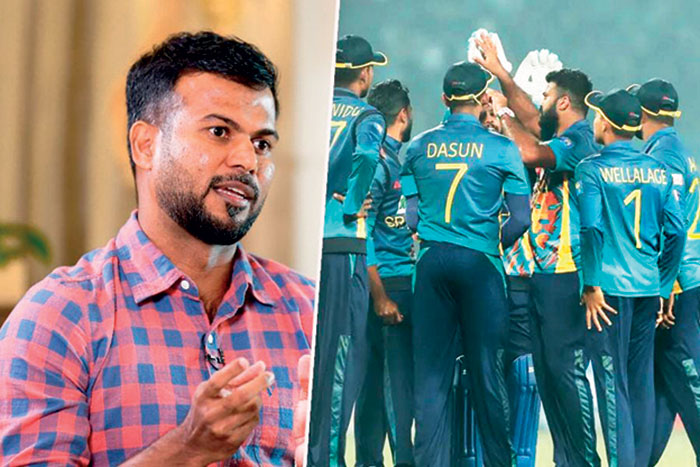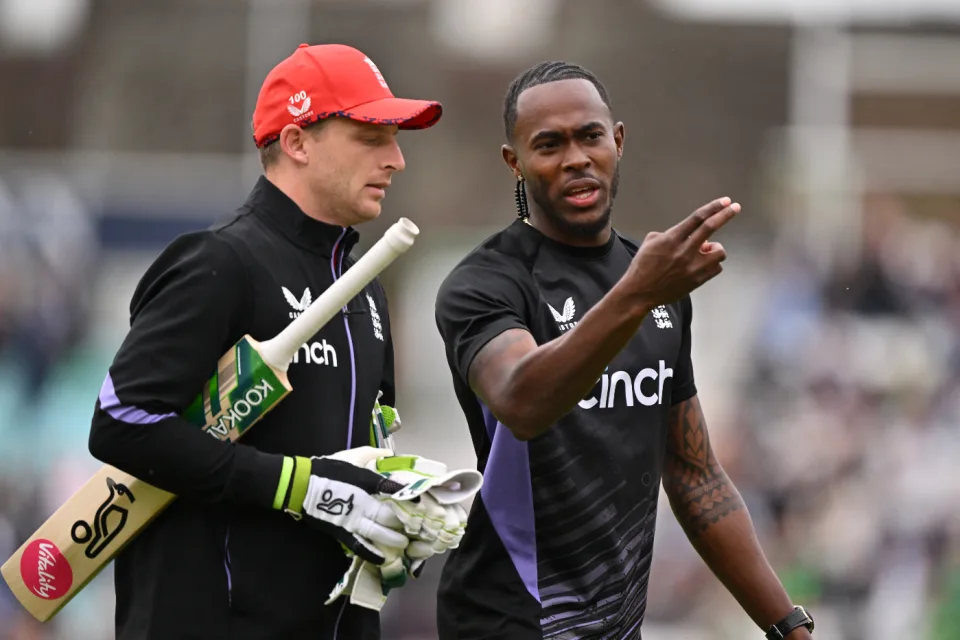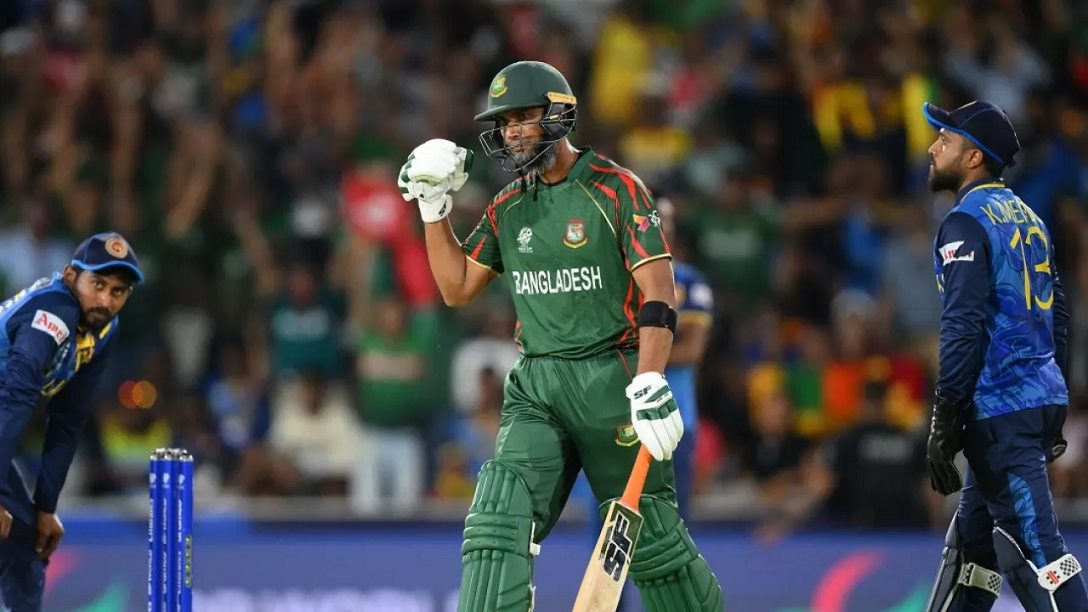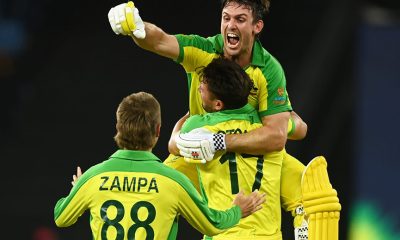Sports
Selectors need to take a look at team culture

There is a difference between taking unpopular decisions and making dumb decisions. Taking the wicketkeeping gloves from Kumar Sangakkara in 2006 in Test match cricket was an unpopular decision.
Backing Sanath Jayasuriya despite having scored one half-century in his first 50 ODIs was another unpopular decision. Handing the vice-captaincy of the national team to Mahela Jayawardene in 1999 sidelining several seniors was yet another unpopular move. The selectors had very good reasoning to make those moves and eventually got the support of the players and the public.
Take the case of current Chairman of Selectors Upul Tharanga. He debuted for Sri Lanka soon after the Under-19 World Cup but didn’t have numbers behind him in domestic cricket to justify his selection. But he was quite a sensation scoring six hundreds in his first year in international cricket. Five of those six hundreds came overseas as well in different conditions like Mohali, Ahmedabad, Christchurch, Lord’s and Headingly. Our cricket has progressed thanks to those men who were prepared to bite the bullet and make those unpopular moves.
Talking of not so clever selection moves, take for instance the call to give the cold shoulder to half a dozen seniors in white ball cricket in 2020 and then when things backfired to blame lack of skill levels among young players.
In the last three years Sri Lanka played three qualifying round tournaments to get though to ICC events and when they finished the recent World Cup ninth and were knocked out of the Champions Trophy the selectors blame poor fitness standards.
They had conveniently forgotten that they had been in charge for three years and had in fact introduced a highly publicized strict fitness regime before ditching it halfway through.
When you introduce policies you need to persevere with them. Sometimes you have to tinker it a bit or even perhaps completely overhaul it depending on circumstances and that’s understandable. But what is not on is using your policies selectively. That is why the national cricket team went from bad to worse in the last three years.
Club loyalties taking precedence over national interests is recipe for disaster and with the previous selection committee it looked an unwritten rule that all national captains had to come from SSC.
Given the amount of cricket that is played it was insane to limit the selection panel for just three members. Authorities need to explain why it was done so. Sanity has prevailed and now the selection panel has been extended to five members.
There is some criticism that most of the current selectors were active First-Class cricketers until recently. That criticism of course has no validity. Being involved in the sport until recently is in fact a good thing for you are aware as to who are the players who deserve a call up. Of course they are aware of the growing demands of the modern game and that’s an additional qualification. A recently retired cricketer is far better than someone who quit the game two decades ago and this certainly is a step in the right direction.
One reason why Sri Lanka has fared poorly in recent years is because there is a serious discipline issue within the team. Your Test captain is charged for drunk driving, and you soft peddle. Your white ball captain had been on bail for a similar offence, and you turn a blind eye. There is a problem with the standards you have set for your cricket team. Or maybe that if you are from SSC everything is forgiven.
The culture within the Sri Lankan team is not good. You should have fun of course but taking things for granted and easy-going is recipe for disaster. If Virat Kohli and David Warner can turn up when training is optional to sharpen their fitness and fielding why not you when you had to qualify for the World Cup. It is baffling indeed.
You find several players coming into the Sri Lankan side with all the right attitudes. But once they have joined ranks with the side they buy into that easy-going culture.
There is so much talk about the skill levels of Sri Lankan players being not all there at present. That maybe true but what is not true is that you don’t need skill levels to become a good fielding unit. You can get there by sheer hard work. This World Cup Sri Lanka dropped 16 catches, that’s almost two catches dropped for a game. In the last two T-20 World Cups, if not for dropped catches the team would have fared much better. The fielding woes need to be addressed at the earliest possible.
The selectors are set to introduce new captains and it seems they will have three captains for three formats. While doing that will keep several senior players happy, not sure whether our cricket is so rich with Mike Brearleys and Tiger Pataudis to warrant captains for each format.
There’s lot of cricket ahead in the new year. The key events will be the T-20 World Cup in the US and West Indies and the tour of England that includes three Test matches.
Given our history of poor injury management in recent times, the selectors have a lot in their plate. Upul Tharanga is known as a fair and unassuming character who sacrificed his own comforts for the sake of team. If he is able to drag the team from the current mess, he will be remembered for a long time to come.
Sports
England face Australia in the battle of champions

The first truly heavyweight clash of this expanded T20 World Cup format comes freighted with both history and subplots. A rematch of the 2010 World T20 final at Kensington Oval, the match pits Jos Buttler’s defending champions – who are aiming to become the first team to retain the trophy – against the Australian winning machine, victors at the 2021 edition and current world title-holders in Test and ODI cricket. And that’s before you throw in the Ashes for afters.
Already there is added pressure on England, after the rain in Bridgetown led to a share of the points in their opener against Scotland (and that having conceded 90 runs from 10 overs without taking a wicket in a tepid bowling display). Lose to their oldest rivals and it will leave their Super 8 prospects open to being waylaid by the perils of net run-rate calculations, or worse.
The Scotland match was the third abandonment in five suffered by England, after a rain-affected home series against Pakistan, which has clearly hampered their readiness for this campaign after almost six months without playing T20 together. It does not take much for a side to click in this format – and England looked in decent shape when they did get on the field against Pakistan – but Buttler will be anxious for things to go their way on Saturday, if only to avoid further questions referencing the team’s disastrous ODI World Cup defence last year.
Australia, under the laidback leadership of Mitchell Marsh would love nothing more than to add to the English sense of jeopardy – having helped bundle them out of the tournament in India on the way to taking the crown. Their head to head record is less impressive in T20 however, with England having won six of the last seven completed encounters, as well as that 2010 final.
Despite a wobble with the bat, Australia avoided mishap against Oman earlier in the week, the experience of David Warner and Marcus Stoinis shining through in difficult batting conditions. Surfaces in the Caribbean – not to mention those games staged in the USA – have already had teams scratching their heads; rather than the “slug-fest” England had prepared for, following a high-scoring tour of the Caribbean in December, it looks as if boxing smart may be the way to go.
Speaking of Warner, this could be the last time he faces up against England in national colours – and another match-winning contribution would likely reduce the chances of them meeting again in the knockouts. On the other side of the card is Jofra Archer, fresh from an emotional maiden outing at Kensington Oval and ready to take on Australia for the first time in any format since 2020. Can Mark Wood fire up England’s campaign, as he did during last summer’s Ashes? Will Pat Cummins be back to harass the old enemy once again? Seconds out, it’s almost time to rumble.
Cummins is set to return after being rested for the Oman game, which saw Mitchell Starc leave the field with cramp. Starc is understood to be fine and could keep his place – which would likely see Nathan Ellis miss out. Marsh is still not fit to bowl, with Australia likely to continue with the allrounder combination of Stoinis and Maxwell to give them cover.
Australia (probable XI): David Warner, Travis Head, Mitchell Marsh (capt), Glenn Maxwell, Marcus Stoinis, Josh Inglis (wk), Tim David, Pat Cummins, Nathan Ellis/Mitchell Starc, Adam Zampa, Josh Hazlewood
The one change England may consider is Reece Topley coming in for Wood, with the expectation that there will be some rotation among the seamers through the course of the tournament.
England (probable XI): Phil Salt, Jos Buttler (capt & wk), Will Jacks, Jonny Bairstow, Harry Brook, Liam Livingstone, Moeen Ali, Chris Jordan, Jofra Archer, Adil Rashid, Reece Topley/Mark Wood
[Cricinfo]
Sports
South Africa up against their bogey team in batter-unfriendly New York

Once is coincidence, twice is a clue, and three times is proof.
To paraphrase Agatha Christie, that is the narrative around South Africa’s meeting with Netherlands at this T20 World Cup.
The Dutch beat South Africa at the 2022 tournament and ended their semi-final hopes in a match where South Africa appeared to be sleep walking, and then beat them again at the 2023 ODI World Cup, where they exposed South Africa’s vulnerability in the chase. If they to do the treble, not only will Netherlands take the lead in Group D, but they will offer conclusive evidence of the threat they pose to Full Members, especially South Africa.
Of course, it will take some doing after South Africa’s opening performance against Sri Lanka, where they reduced their opposition to their lowest T20I total and chased it down in fairly straightforward fashion thanks to the most stable middle-order of their white-ball era. In Aiden Markram, Tristan Stubbs, Heinrich Klaasen and David Miller, South Africa have bankers and big-hitters and, for this match, they also have the advantage of experience. They’ve already played at Eisenhower Park, and have first-hand knowledge that run-scoring doesn’t come easily;Klassen said they are prepared to use their “cricket brains” and play “smarter cricket”.
But the conditions could be good news for Netherlands, who are not naturally a line-up of big hitters and build their innings on a foundation of turning ones into twos. In other words, they tend to take a slightly more conservative approach to batting, which may work well here, but they’ll be wary of the uneven bounce of the surface and will have to come up with plans to counterattack especially against South Africa’s seamers. Their own bowlers were exemplary in Dallas and will look to build on that performance against a line-up that will likely be more proactive than Nepal’s, but who they have managed to keep quiet not once, but twice in the past. Third time’s the charm, they say.
Anrich Nortje’s stunning return to form against Sri Lanka means South Africa may not have to tinker with the bowling combination, and Gerald Coetzee and Tabraiz Shamsi may have to wait their turns to get a game. The batting line-up should be unchanged, with no space for Ryan Rickelton yet.
South Africa: Quinton de Kock (wk), Reeza Hendricks, Aiden Markam, Tristan Stubbs, Heinrich Klaasen (wk), David Miller, Marco Jansen, Keshav Maharaj, Kagiso Rabada, Ottneil Baartman, Anrich Nortje
Conditions in New York may tempt Netherlands to include an extra seamer and they have Kyle Klein in their squad. But it could come at the expense of a shortened batting line-up and they may not want to risk that.
Netherlands: Michael Levitt, Max O’Dowd, Vikramjit Singh, Sybrand Engelbrecht, Scott Edwards (capt, wk), Bas de Leede, Teja Nidamanuru, Logan van Beek, Tim Pringle, Paul van Meekeren, Vivian Kingma
[Cricinfo]
Latest News
Mustafizur, Rishad, Hridoy dazzle in Bangladesh’s tight two-wicket win over Sri Lanka

Nuwan Thushara’s last over brought Sri Lanka screaming back into the match,as he first bowled Rishad Hossain, and then nailed Taskin Ahmed in front of the stumps with a pinpoint swinging yorker. This left Bangladesh eight wickets down, with 12 runs still to get.
However, the experienced Mahmudullah was at the crease for Bangladesh, and despite some further nervy moments, pushed Bangladesh across the line off the last ball of the 19th over.
But this was a match chiefly decided by Bangladesh’s own outstanding bowling. Mustafizur Rahman was the best among them, using shorter lengths and his cutters efficiently, to claim figures of 3 for 17. Rishad Hossain’s three-for through the middle overs also kept Sri Lanka quiet.
Mustafizur was instrumental in Sri Lanka’s downward spiral through the middle overs, which culminated in a crash-and-burn end. Ultimately, their inability to find boundaries, or even rotate strike against good Bangladesh bowling resulted in their downfall. A score of 125 for 9 always seemed poor on a decent pitch, even if their bowlers made a match of it in the end.
Brief scores:
Bangladesh 125 for 8 in 19 overs (Towhid Hridoy 40, Litton Das 36; Dhanajaya de Silva 1-11, Nuwan Thushara 4-18, Wanidu Hasaranga 2-32, Matheesha Pathirana 1-27) beat Sri Lanka124 for 9 in 20 overs (Pathum Nissanka 47, Dhananjaya de Silva 21; Tanzim Hasan Sakib 1-24, Taskin Ahmed 2-25, Mustafizur Rahman 3-17, Rishad Hossain 3-22) by two wickets
[Cricinfo]
























